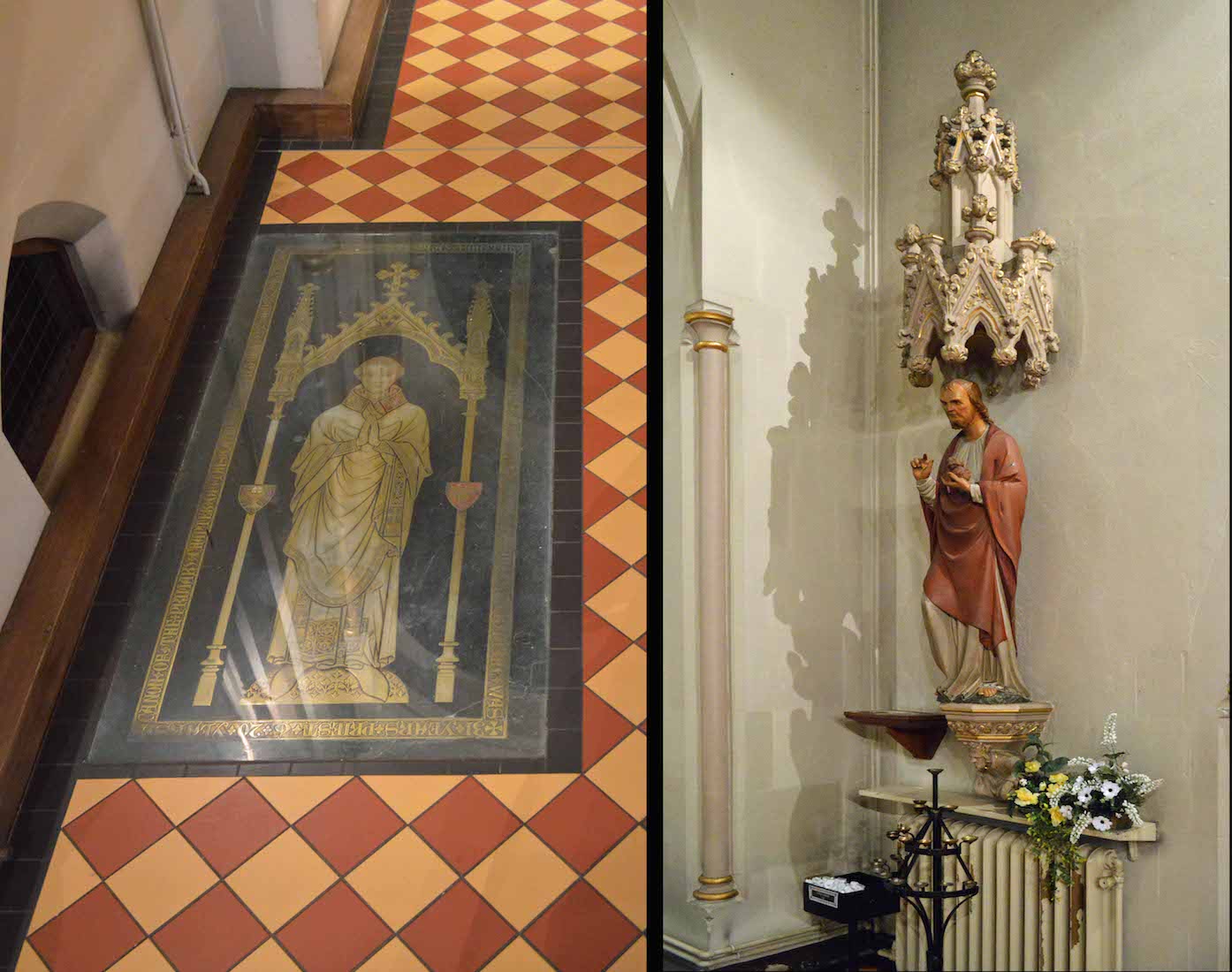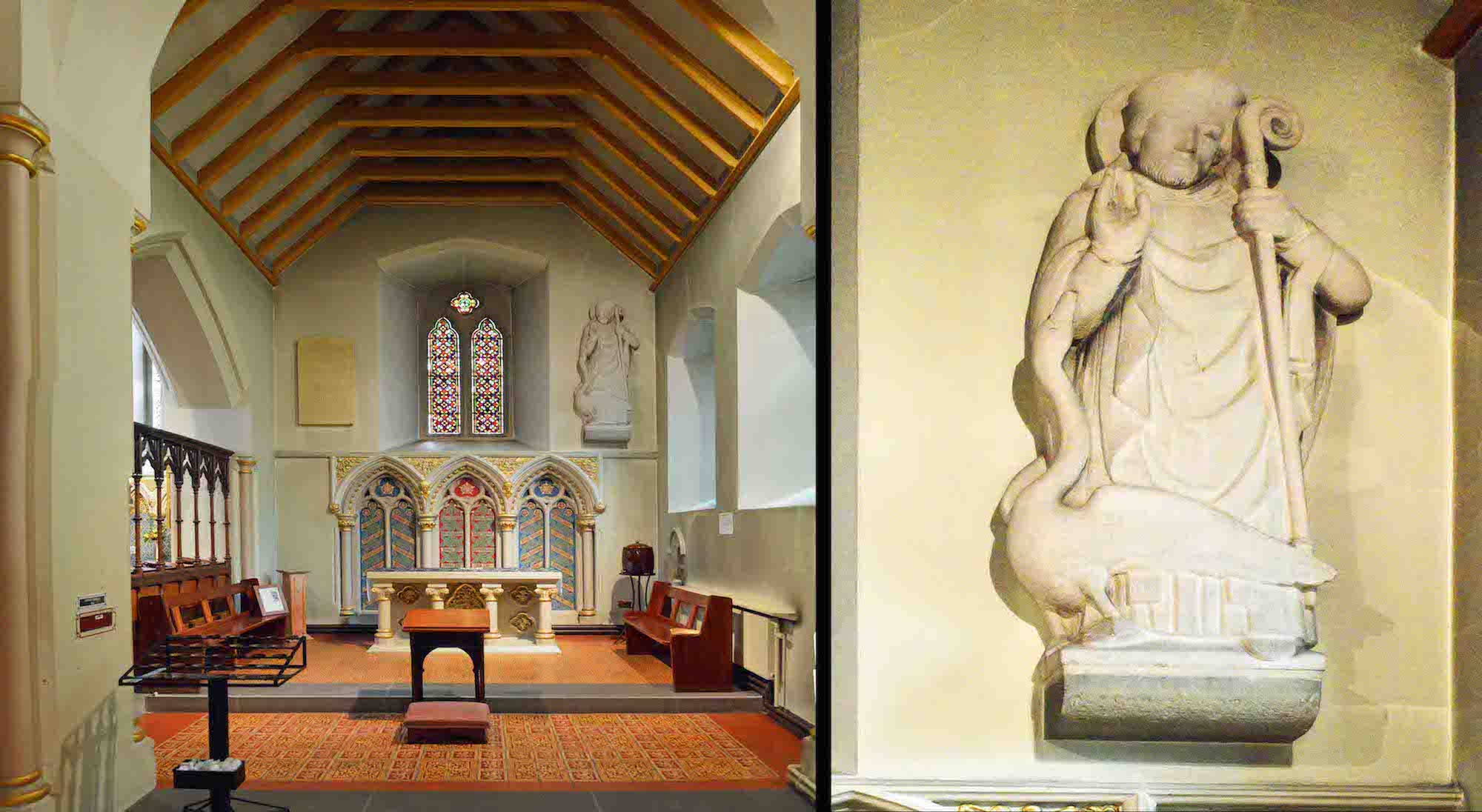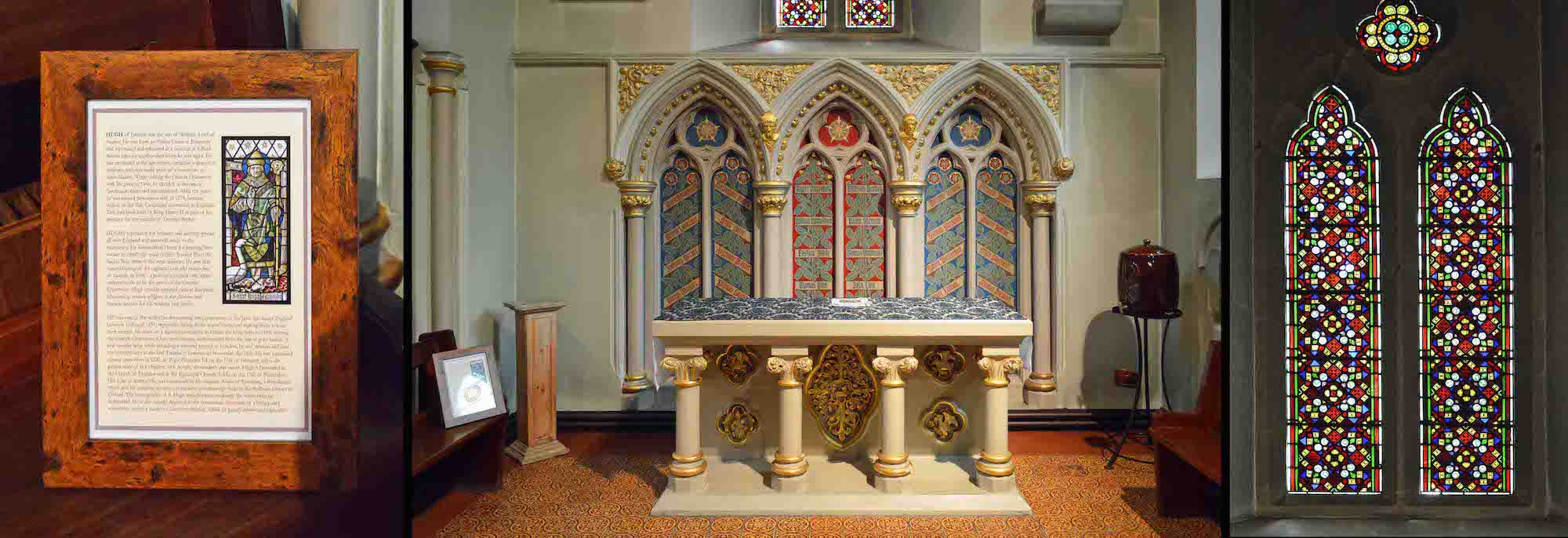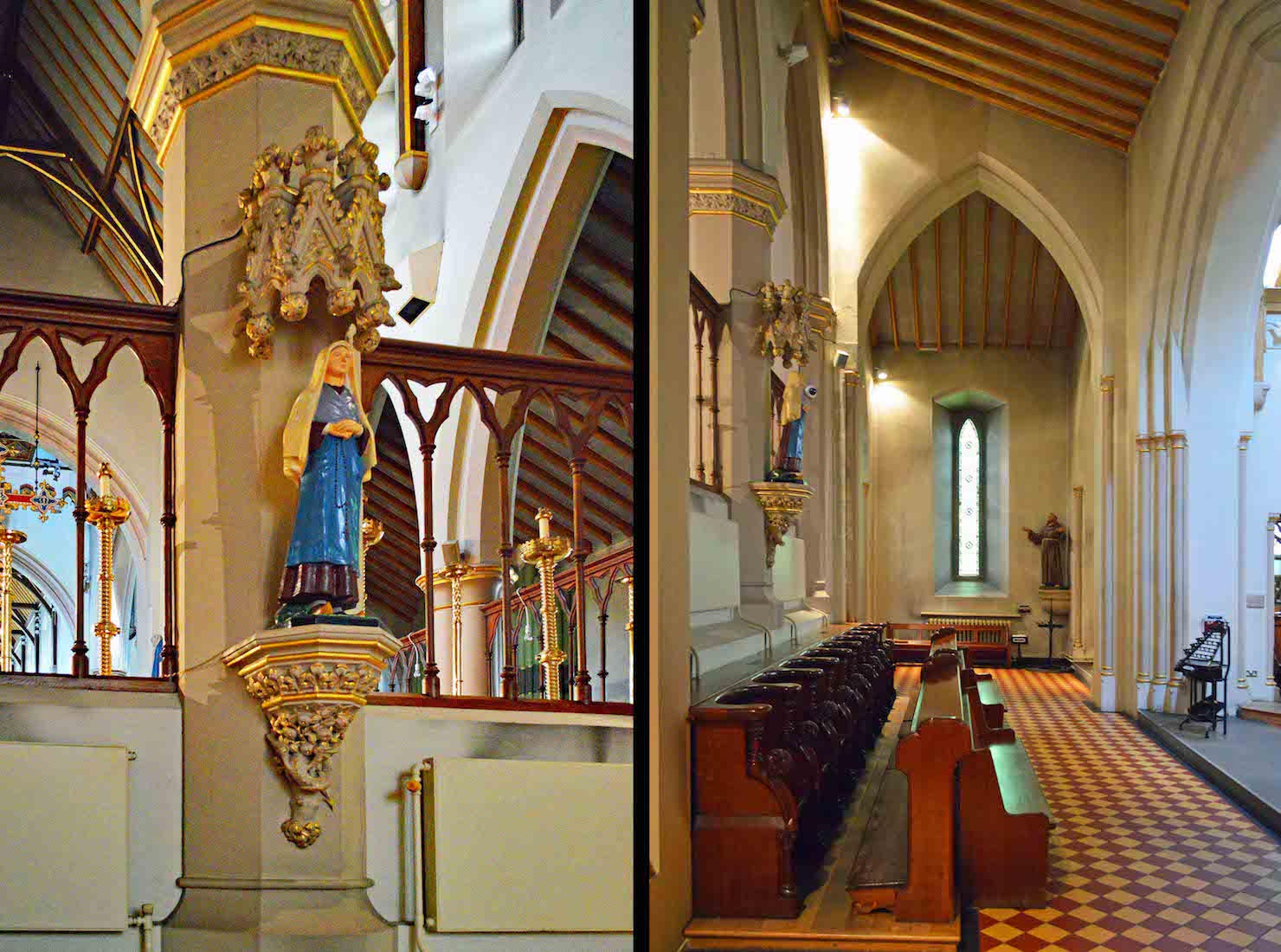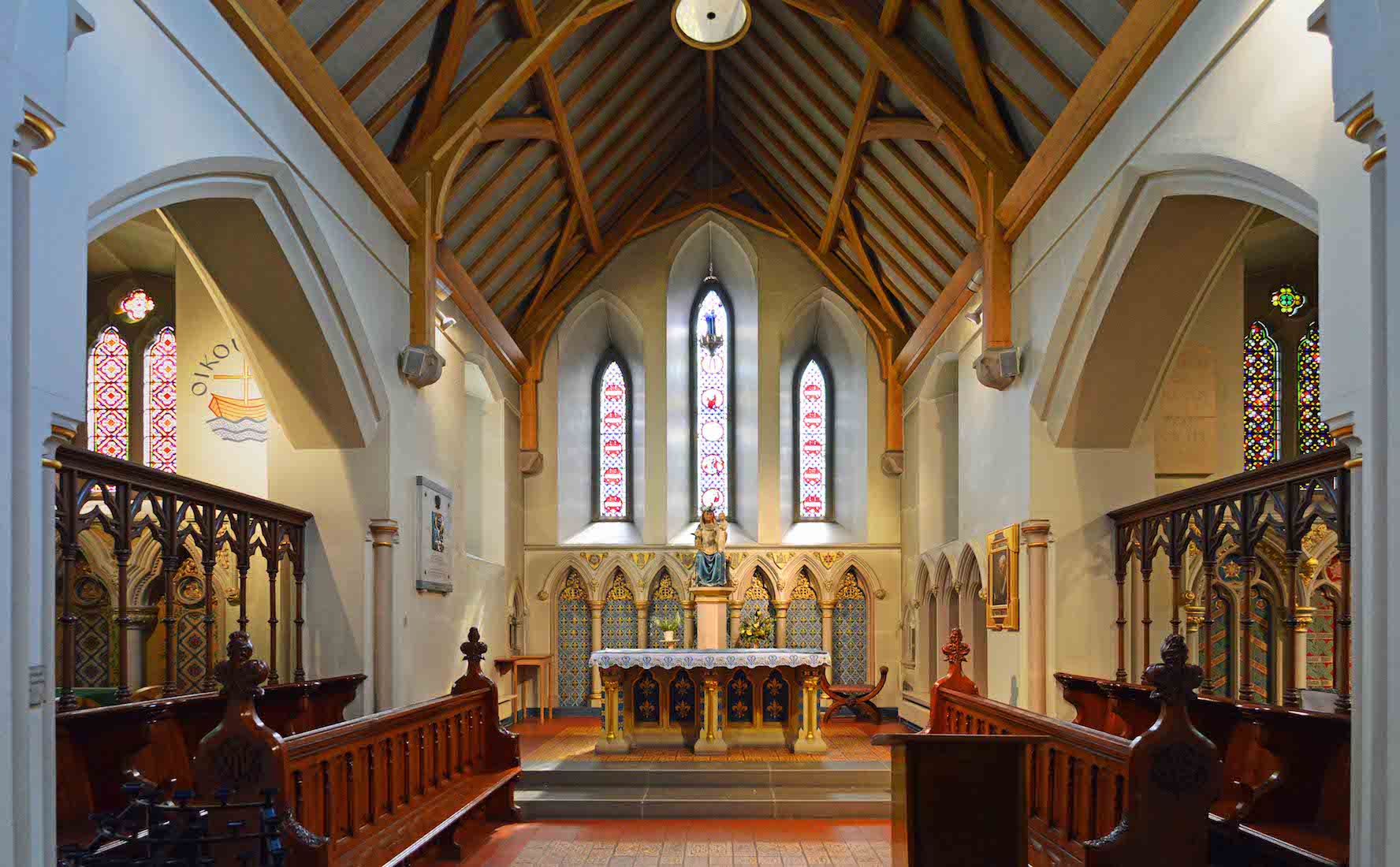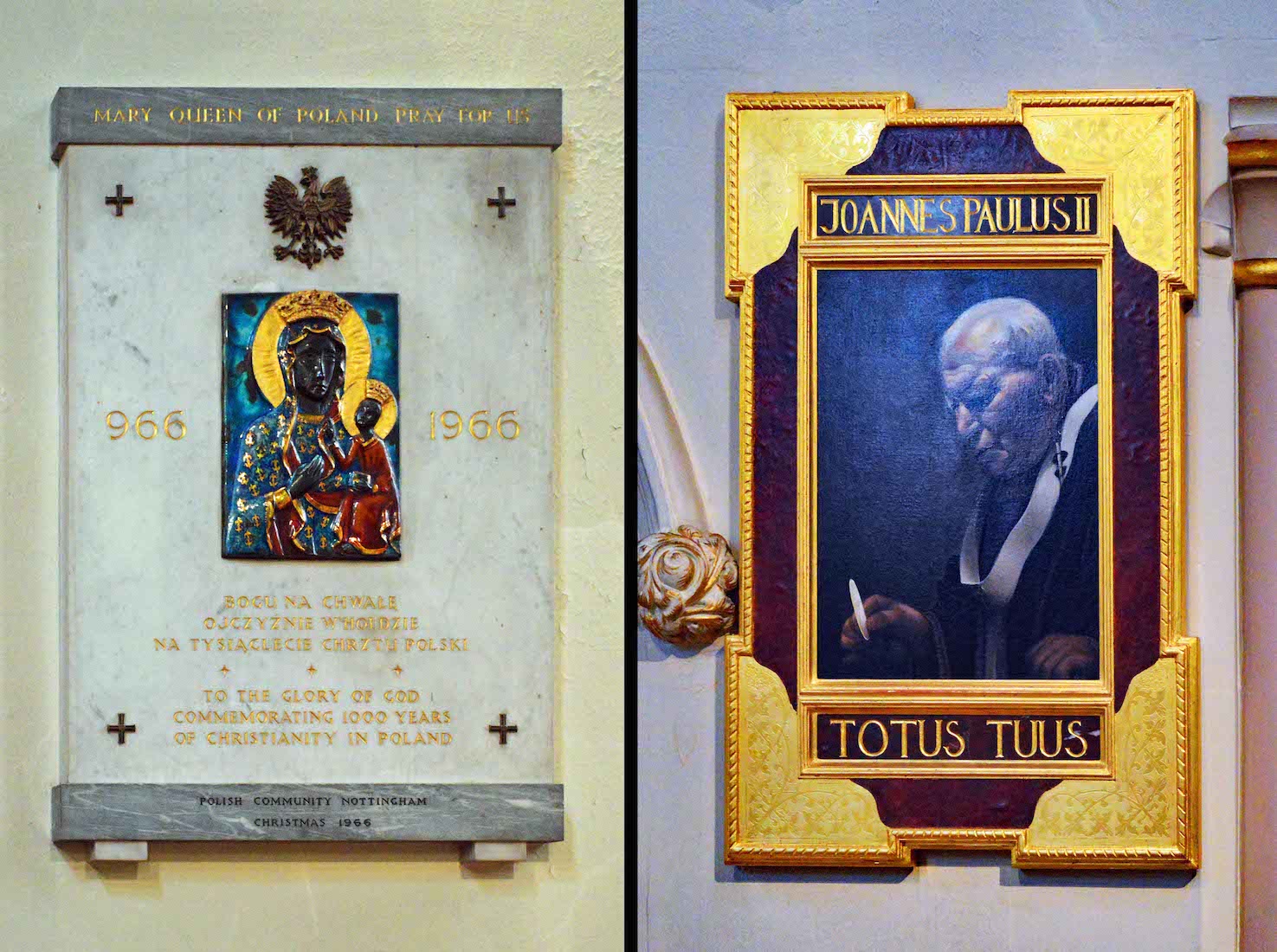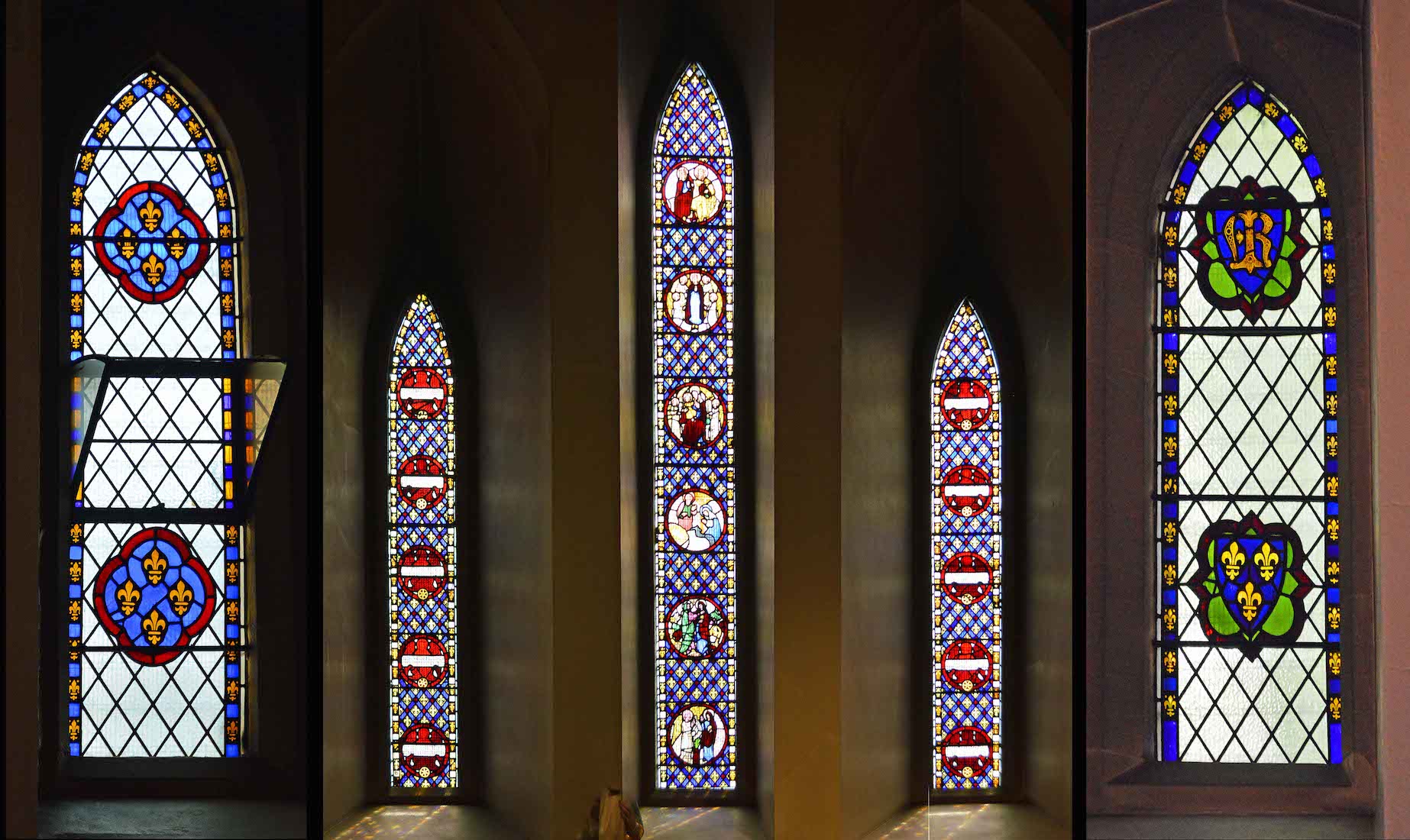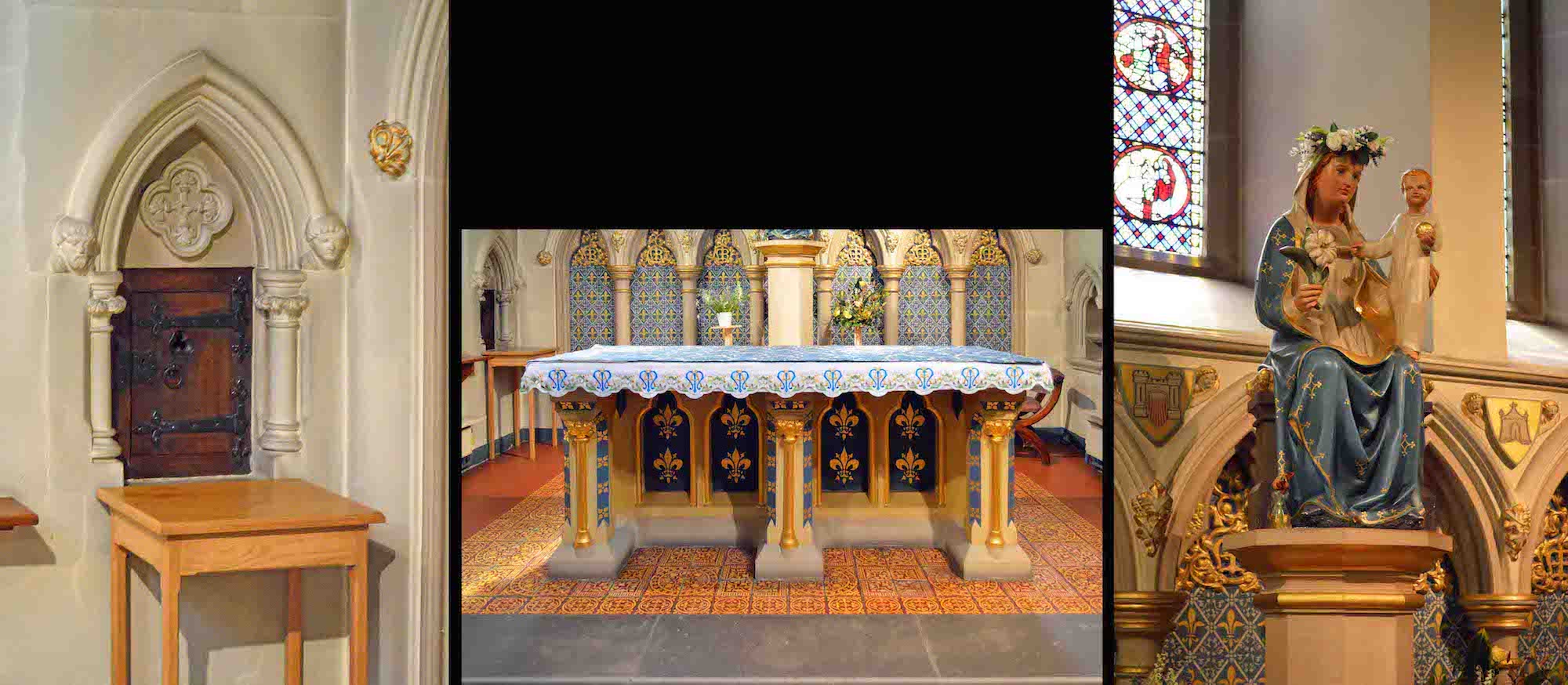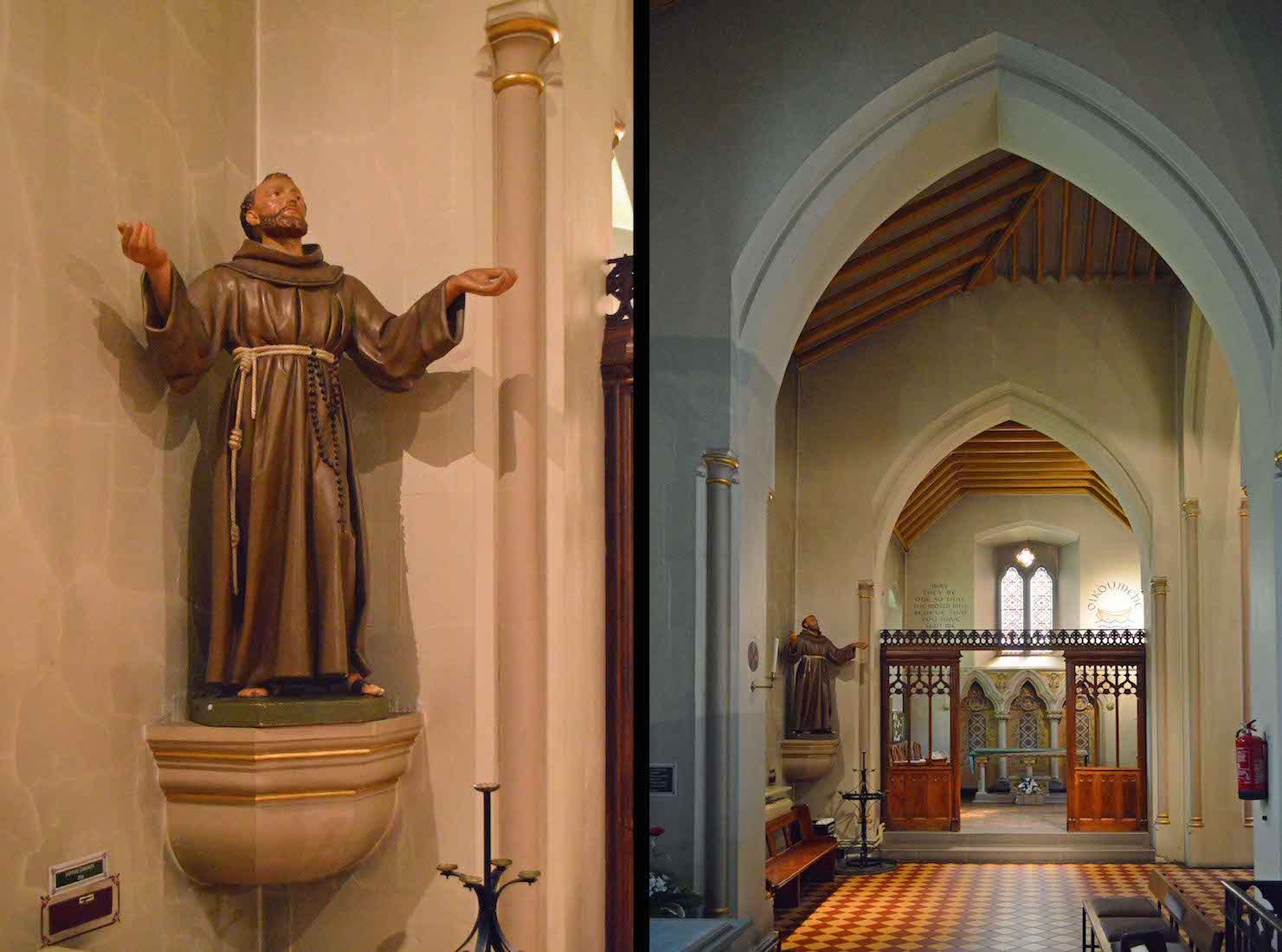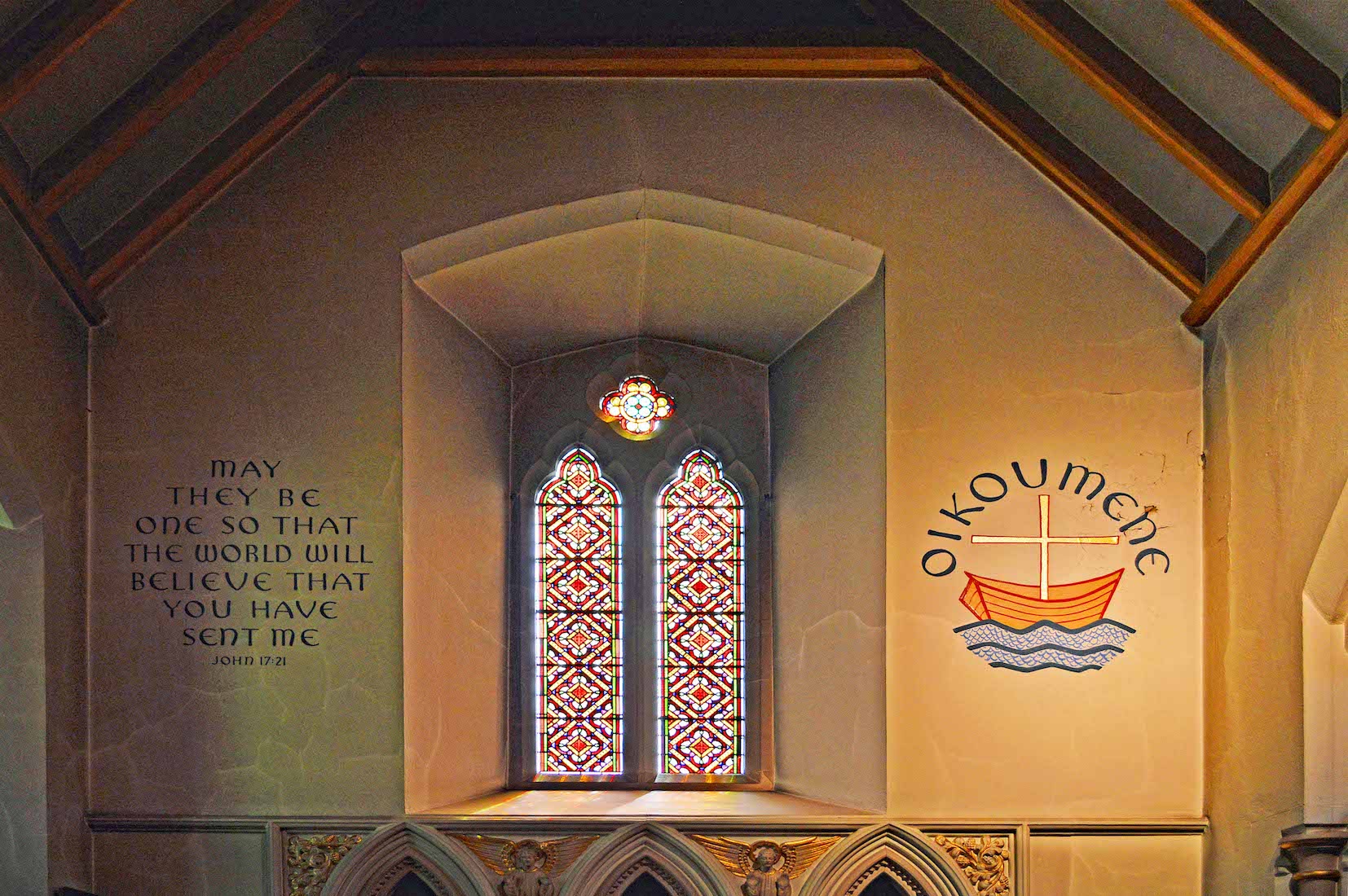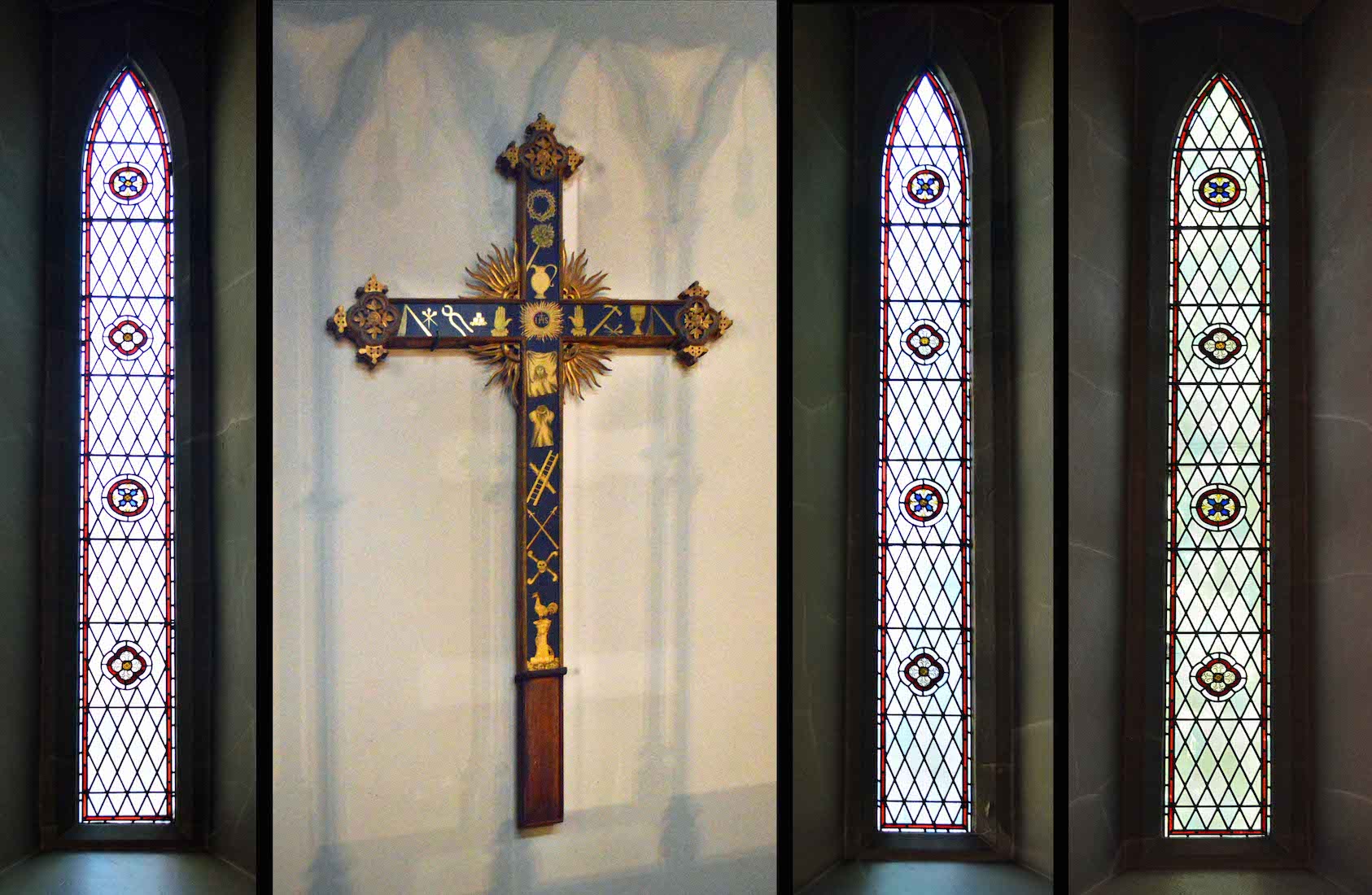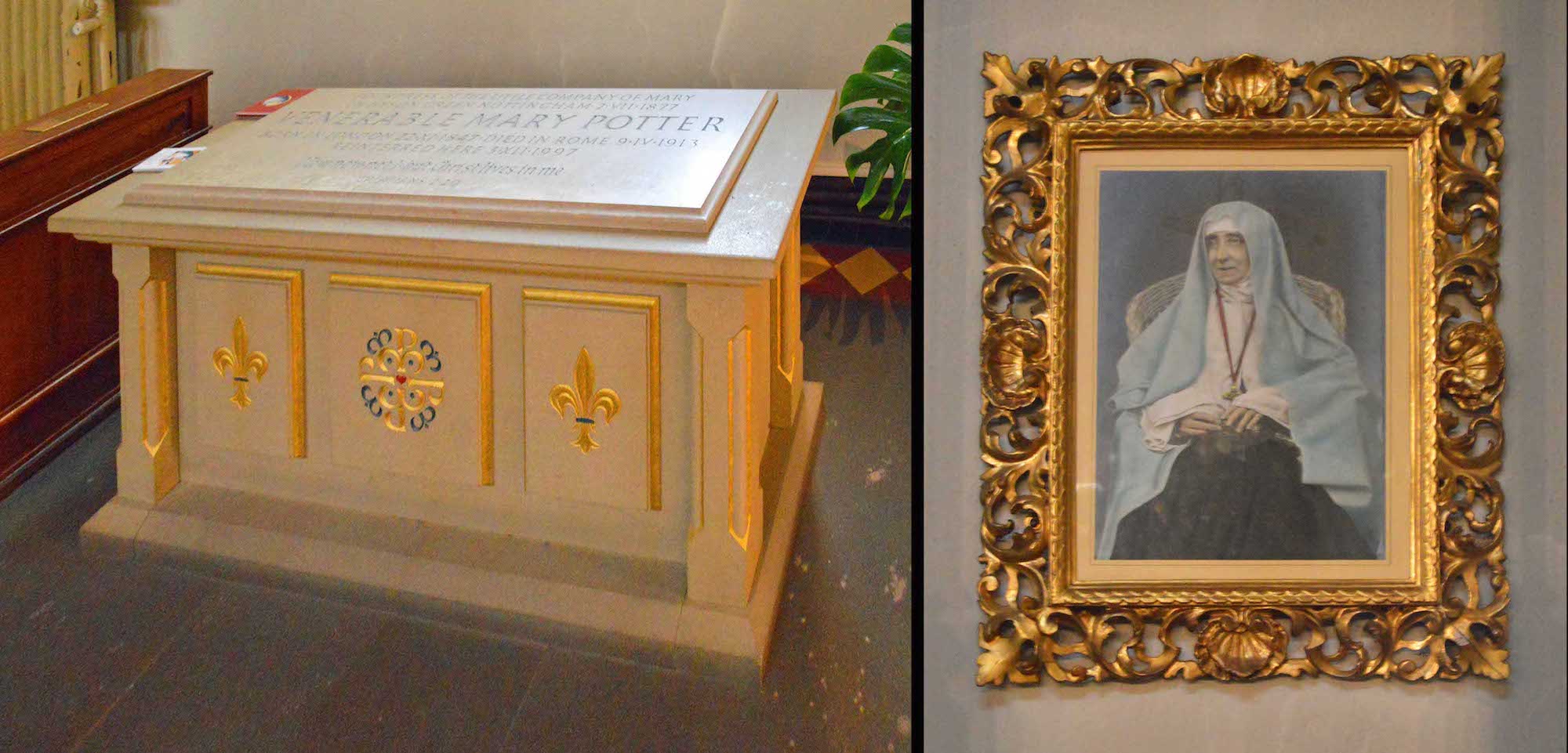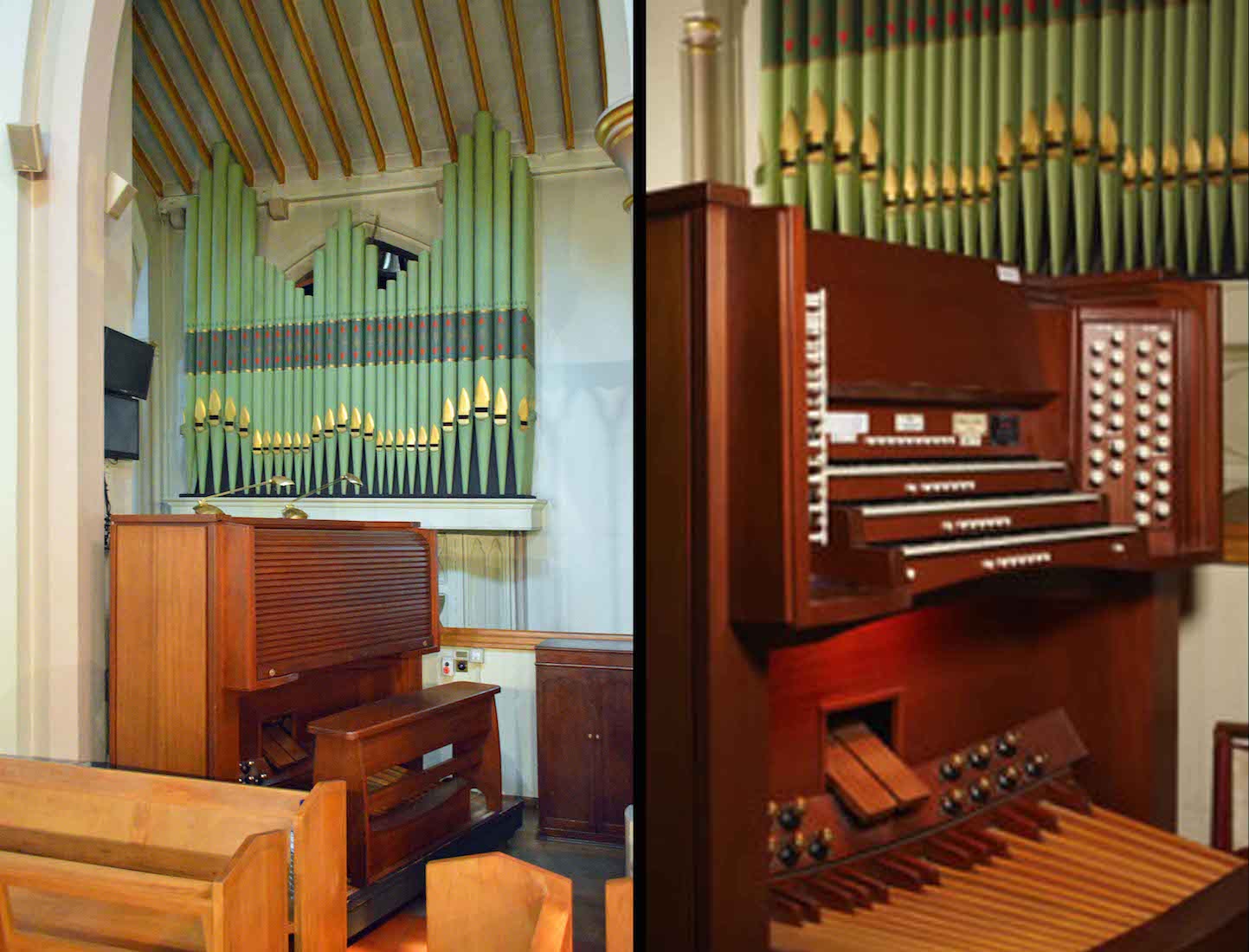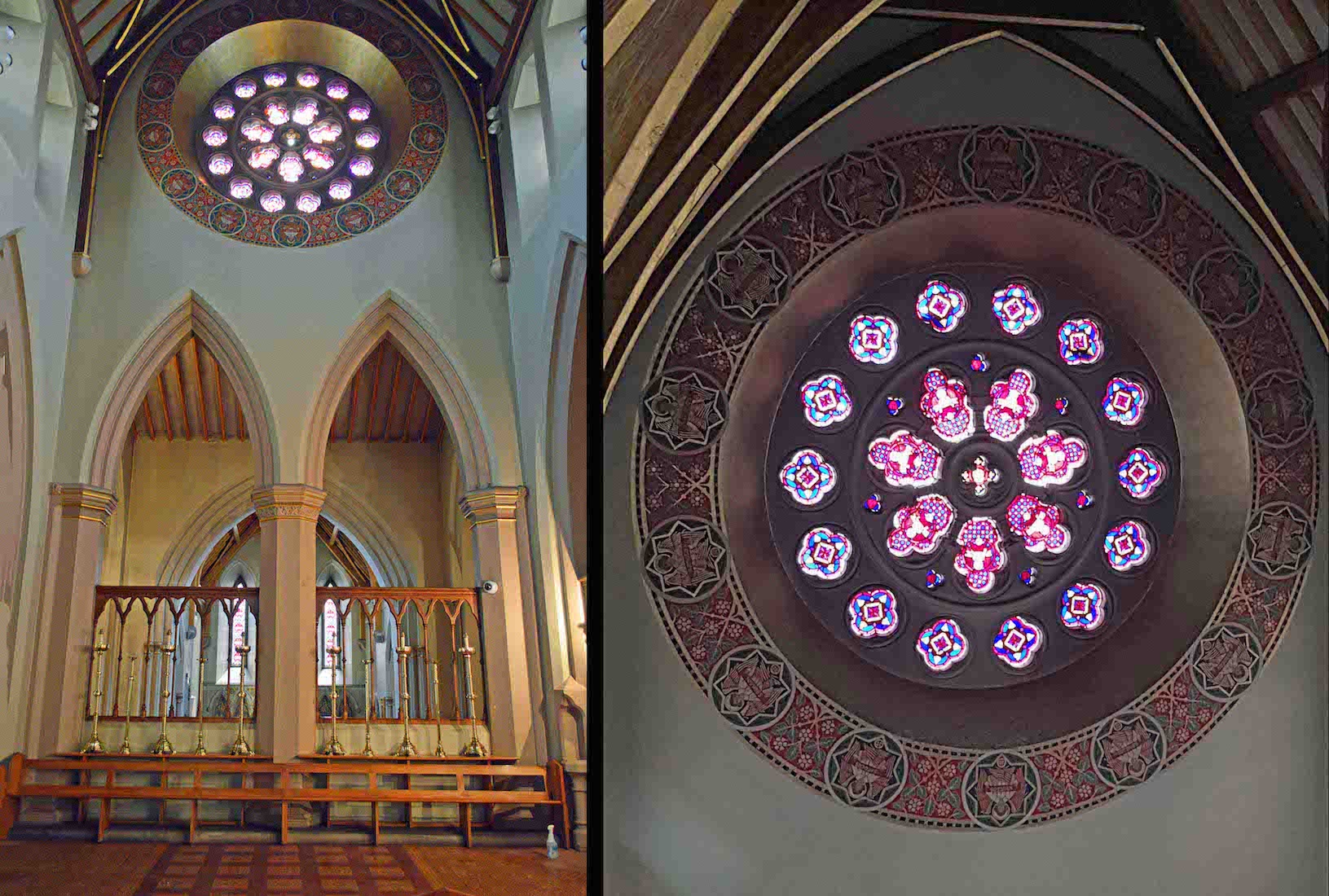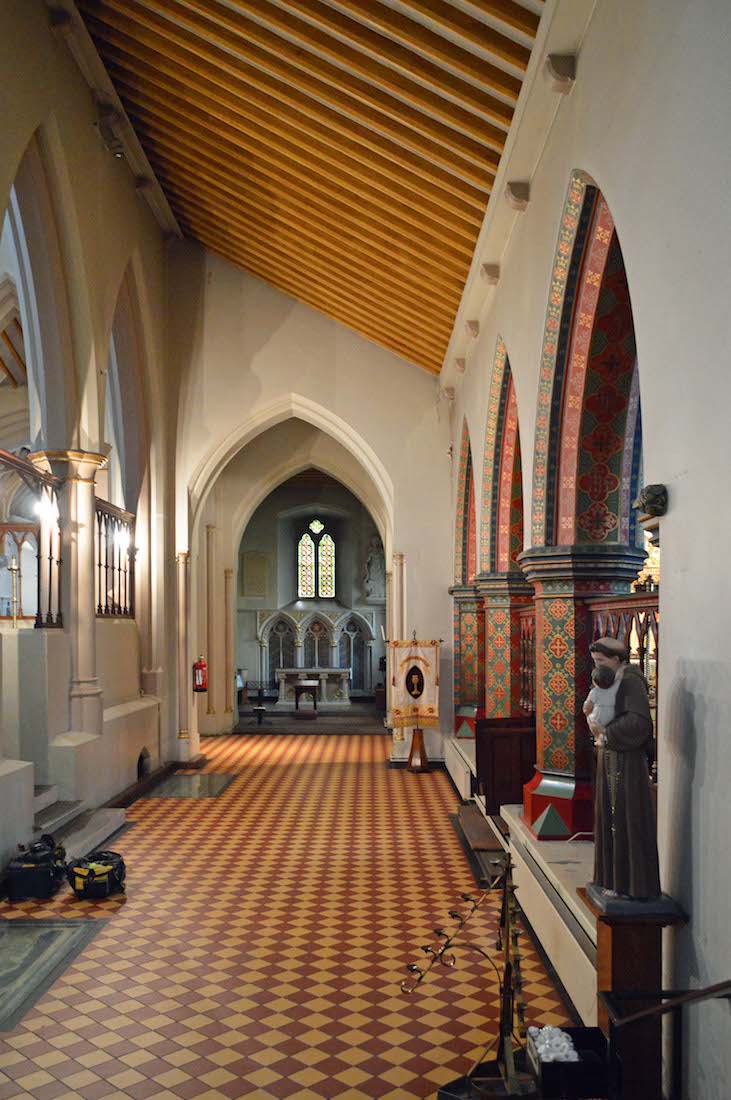
Side arches in the Blessed Sacrament Chapel lead us out into the Southern ambulatory. From this point we have to our right a statue of St Anthony, the Chapel arches and a banner. To our left, a panel is set into the tiled floor. And ahead of us is the Southeast Chapel. PLAN
42. BLESSED SACRAMENT CHAPEL FROM AMBULATORY
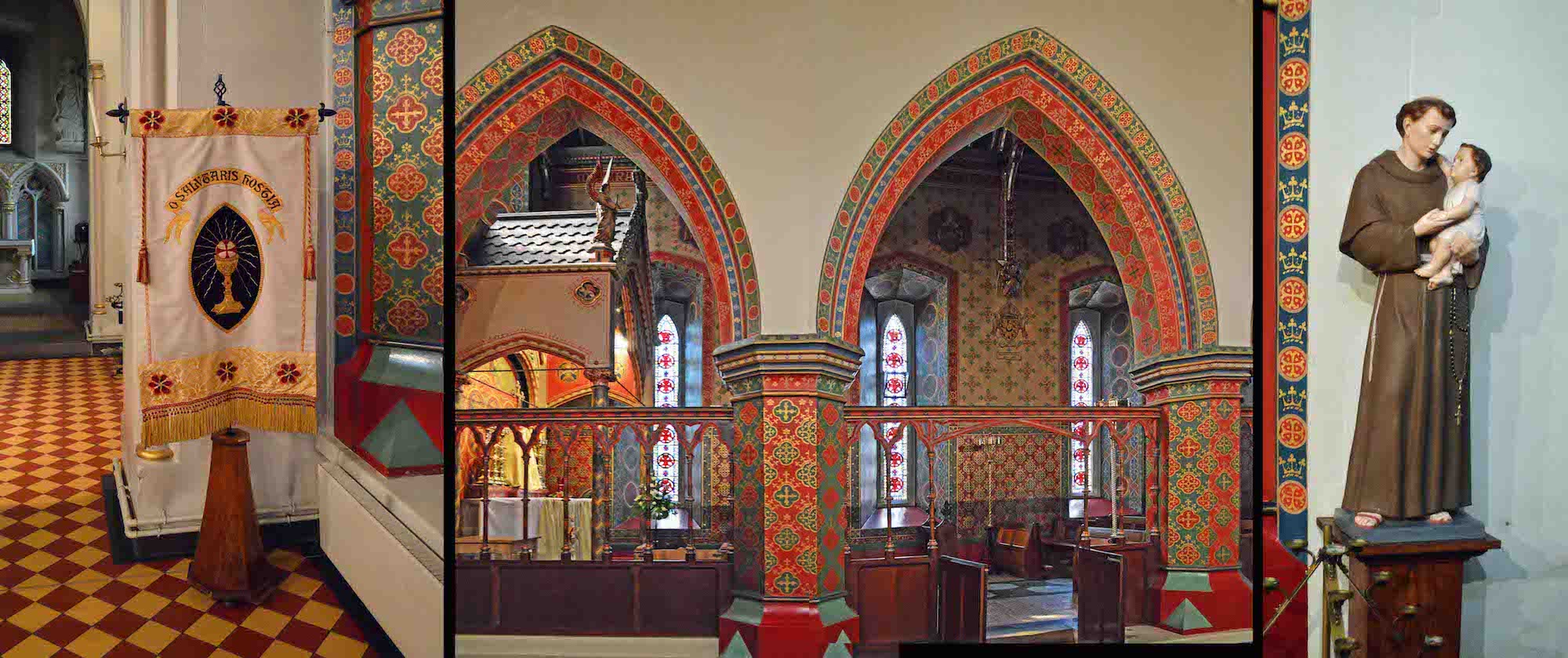
The banner text ‘O salutaris hostia’ (Latin, ‘O Saving Sacrifice’) is a section of one of the Eucharistic hymns written by St Thomas Aquinas for the Feast of Corpus Christi. The side view into the Blessed Sacrament Chapel shows the setting of the altar which was not so apparent before. And at right, the statue of St Anthony of Padua, to whom it is said, the Christ child appeared.
43. FLOOR SLAB AND SAINT
The floor memorial remembers a member of the Cathedral clergy who was 31 years a priest and 20 years a canon. Unfortunately I cannot find his name. Standing in the corner and looking out is another unidentified saint.
44. SOUTHEAST CHAPEL AND ST HUGH
We walk to the end of the Southern ambulatory and enter the Southeast chapel. This is dedicated to St Hugh of Lincoln, the secondary patron of the Cathedral. The statue of St Hugh to the right of the altar is by Eric Gill. Hugh of Lincoln (1135/40 – 1200), was a French noble, Benedictine and Carthusian monk, bishop of Lincoln, and Catholic saint. At the time of the Reformation, he was the best-known English saint after Thomas Becket.
45. IN THE CHAPEL
Inside the Chapel, the names of 30 martyrs associated with the diocese are inscribed on the wall behind the altar.
46. VIRGIN MARY AND RETROCHOIR
Leaving the Southeast Chapel we walk along the Eastern ambulatory. Along this wall on the left are a number of canons’ stalls. The Lady Chapel opens up on the right hand side, and opposite is a young lady holding a rosary – an allusion to the story of ‘Our Lady of Lourdes?’.
48. LADY CHAPEL MEMORIALS
The tablet on the wall at left celebrates 1000 years of Christianity in Poland, 966 – 1966. It features the Black Madonna icon, Our Lady of Czestochowa from Poland. The memorial on the wall at right remembers Pope John Paul II with his apostolic mnotto ‘Totus Tuus’. This Latin phrase means ‘totally thine’ and expressed his personal Consecration to Mary.
49. LADY CHAPEL WINDOWS
The Lady Chapel has an Eastern window and a window in each side wall. The side windows contain fleur-de-lys roundels and shields and a ‘Blessed Virgin’ symbol. The Eastern window is similar in design to other windows we have seen, except that the central lancet here has scenes from the life of St Mary.
50. LADY CHAPEL ITEMS
At left is an aumbry where reserved Elements of the Eucharist are kept. The central altar is attractive, and above is a statue of a youthful Virgin Mary and the Baby Jesus bedecked with flowers.
51. INTO THE UNITY CHAPEL
We leave the Lady Chapel and continue along the Eastern ambulatory to the Unity Chapel. A praising monk stands in the corner by the entrance to the Chapel.
52. UNITY CHAPEL
This Northeast chapel is devoted to Church unity. It is entered through an oak screen which was originally in the baptistry. On the wall at left we read the words of Jesus referring to his disciples: ‘May they be one so that the world will believe that you have sent me’ (John 17:21). At right is a picture of a cross in a little boat with the Latin word ‘oikoumene’ above. This is the logo of the World Council of Churches. The boat is the Church, the mast the cross, and ‘oikoumene’ means ‘ecumenical’ – literally ‘the whole inhabited earth’.
53. NORTHERN AMBULATORY
We continue, walking down the North ambulatory. Of interest here is the large cross, and the tomb and painted portrait. There are also three more windows in this wall. We shall find that the tomb and painting relate to Mary Potter. In the distance we see a stand of organ pipes, beyond which is the North transept.
54. NORTH AMBULATORY WINDOWS AND CROSS
The windows are simple lancets with clear glass, diagonal lattice, thin frame and small decorative quadrifoils/roundels. The large painted cross is interesting in that it depicts various items associated with the crucifixion of Christ.
55. MARY POTTER TOMB AND PAINTING
The Venerable Mary Potter is revered as Nottingham Cathedral’s own ‘saint in the making’, along with her 'Little Company of Mary'. Her work began in 1877 when she established the first Catholic religious congregation of women specifically dedicated to nursing. Mary Potter’s care of the poor, the sick and the dying were recognised by the Pope in 1988 when he declared her to be venerable: the first stage in the process of sainthood. The mortal remains of the Venerable Mary Potter were re-buried in the north ambulatory of the Cathedral in 1997.
56. ORGAN
The organ was built in 1913 by Norman & Beard, and rebuilt in 1989 by Hill, Norman & Beard. Further modifications were carried out in 1980 by Henry Willis, and in 1995 by Henry Groves & Son. The organ has a multiplex transmission system, a 64 channel piston memory system, and a digital memory player..
57. ROSE WINDOW
We conclude our investigation of Nottingham Cathedral by looking at the East rose window. This has seven-fold symmetry, and is surrounded by a wreath of 14 angels. I am indebted to Mick Whitcombe for the photo at right. This completes our tour of the Cathedral.
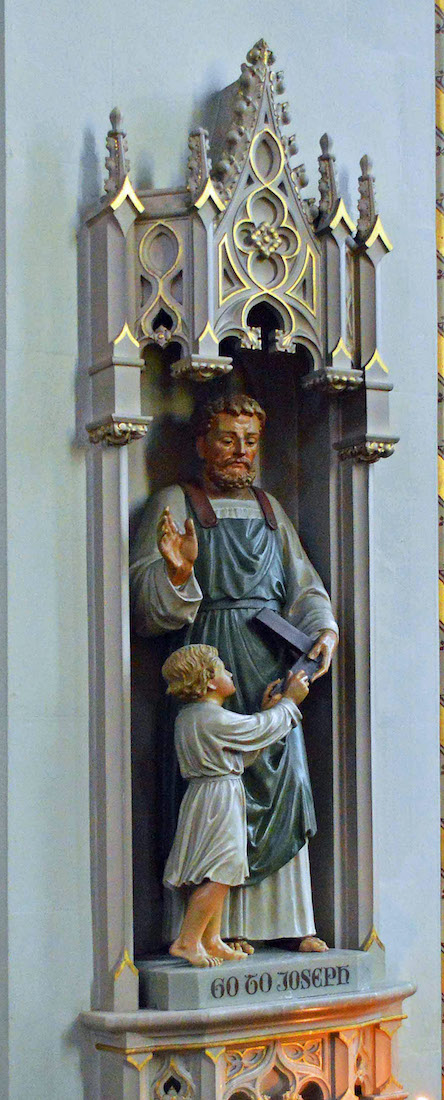
CONCLUSION
I hope you have enjoyed visiting Nottingham Cathedral with me. I found it an interesting visit, although there was a problem with workers installing a new set of lights inside!
I am happy to receive constructive comments or corrections concerning this website. The best websites are the ones which have no errors! I am grateful to my wife Margie who has proof-read these pages.
Except where acknowledged, the photographs on this site are all mine. However, the text has been drawn from various sources, and I gratefully acknowledge these: trusty Wikipedia, the Cathedral Visitor’s Guide, and the Cathedral website:
http://www.stbarnabascathedral.org.uk/
The photographs which appear on this site can also be found in higher resolution at:
https://www.flickr.com/photos/paulscottinfo/sets/
Paul Scott Site created 09 / 2018; reformatted 04 / 2020

